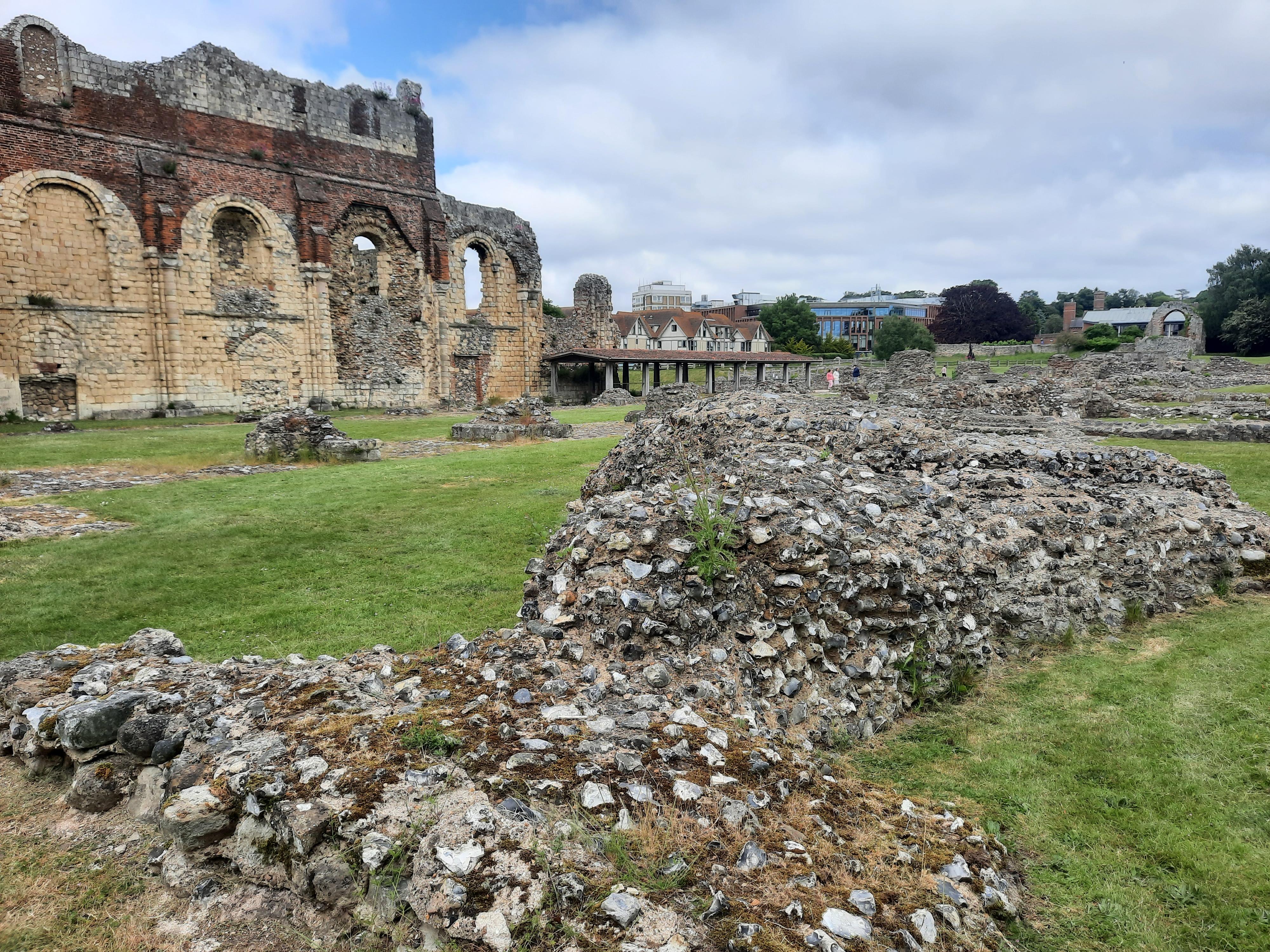St Martin
Canterbury, Kent
The oldest church in continuous use in the English speaking world; part Roman, part Saxon.

This great abbey, marking the rebirth of Christianity in southern England, was founded shortly after AD597 by St Augustine.
Longport, Kent
In 597, Augustine arrived in Anglo Saxon England, having been sent by Pope Gregory I to convert the Anglo Saxons. The King of Kent at this time was Ethelbert. Although he worshipped in a pagan temple just outside the walls of Canterbury to the east of the city, Ethelbert was married to a Christian, Bertha. According to tradition, Ethelbert gave his temple to St Augustine for a church and monastery and he also ordered that the church to of 'becoming splendour, dedicated to the blessed apostles Peter and Paul'. He also endowed it with a variety of gifts.
The abbey provided a home for Augustine and his brother monks. as well as a burial place for abbots, archbishops, and kings of Kent.
The monastic buildings were most likely wooden in the manner of Saxon construction, so they could be quickly built. However, building a church of solid masonry, like the churches Augustine had known in Rome, took longer. The church was completed and consecrated in 613. Around 624 a short distance to the east, Ethelbert's son founded a second church, dedicated to St Mary which also buried Kentish royalty. The abbey became known as St Augustine's after the founder's death.
For two centuries after its founding, St Augustine's was the only important religious house in the kingdom of Kent. Over time, the abbey acquired an extensive library that included both religious and secular holdings.
From about 1250 onwards lavish expenditure was made on new buildings. In addition, the papacy imposed many levies on the abbey and the large debt that was incurred by these expenditures might have swamped the abbey had it not been for generous benefactors who came to the rescue.
The cloister, refectory and kitchen were totally rebuilt. A new abbot's lodging and a great hall were added. In the early 14th century, land was acquired for a cellarer's range, a brew house, a bake house, a new walled vineyard and a Lady Chapel was built to the east of the church.
But, like all other monasteries in the land, St Augustine's suffered during Henry VIII’s Dissolution of the monesteries and on 30 July 1538 the last abbot and monks left the abbey, signalling the end of over 940 years of monastic presence.
Most of the abbeys library was taken or as well as the abbey silver. Over the years parts of the abbey were sold off and some were taken for use by King’s School which was founded by Henry VIII.
All that is left of the abbey church is the north wall of the nave, which still stands impressively in the grounds.
Canterbury, Kent
The oldest church in continuous use in the English speaking world; part Roman, part Saxon.
Canterbury, Kent
You can't come to Canterbury without visiting the world famous cathedral, site of the shrine of Thomas Becket and the seat of the Archbishop.
Canterbury, Kent
All Saints is a Grade II listed building built in 1844.